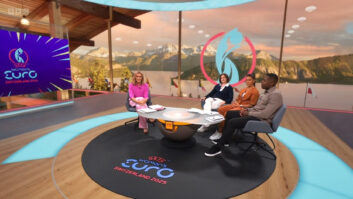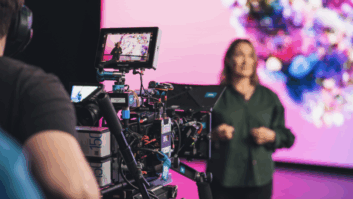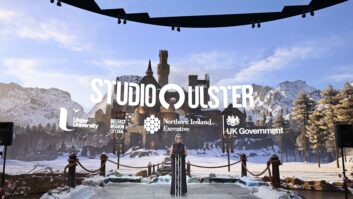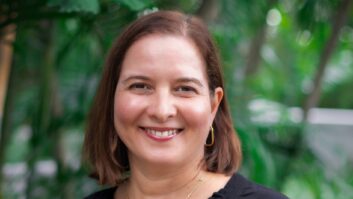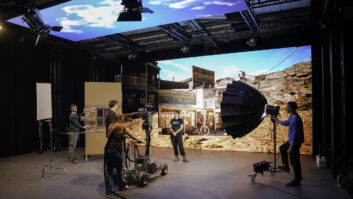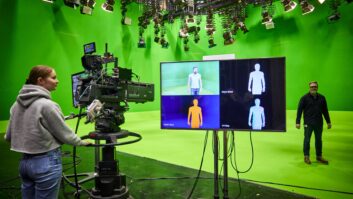Last week BBC News unveiled the newly refurbished Studio B at New Broadcasting House, which is now home to the broadcaster’s BBC News at Six and Ten, and will also welcome BBC London and election programming.
Studio B had been mothballed during the pandemic, but was revived when BBC director-general Tim Davie announced he wanted BBC journalism to be front and centre of the broadcaster’s output.
“It was decided to bring Studio B back into service for the bulletins,” explains Chris Cook, BBC project and presentation director, “but the only way we could do that was to put some form of automation in to make it an efficient space.
“It was decided that if we were going to do this, we were going to do properly and we were going to allow it to flex up to become our general election studio as well without having to rebuild a load of stuff. It’s probably the biggest install in a studio of that size to have fully robotic cameras in there, and it was the only way we could really bring it back online within our staffing model.”
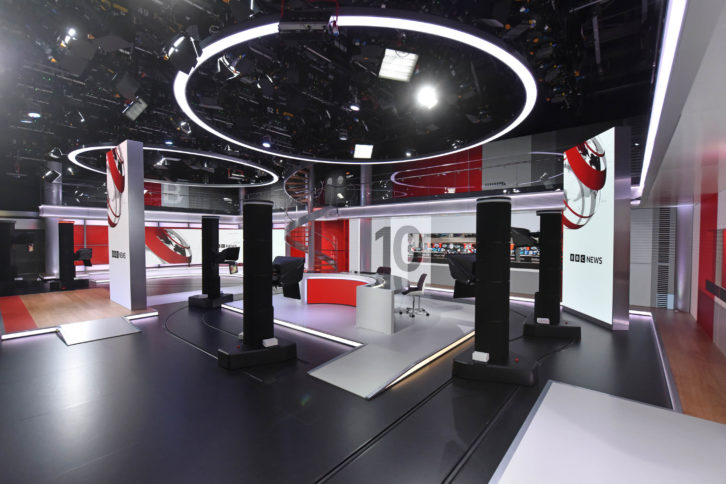
The whole process took about a year from the decision to reopen the studio to last week’s on screen launch. That included a full procurement process, not just for new technology but for the design of the studio itself. “It went out to tender for the designers, and Jago were the ones that won the pitch,” says Cook. “The thing that won it was that it was real, it was physical, it wasn’t virtual reality. There was a big desire within news to have something that was real, that you could touch, that you could see. The big design element was to drive audiences to digital, which is why we’ve introduced two towers, which are there to mimic things that people have in their hand the entire time. They’re there to help us push to content on BBC Sounds, iPlayer, the website, or weather, etc.”
However, Cook is keen to stress that while much of Studio B is physical, it does have augmented reality capabilities, which will be used for the BBC’s election programmes.
Screens
Studio B includes LED screens from floor to ceiling, including the backing walls and across the mezzanine. There are the four feature screens, including two towers that mimic one another. “The foreground tower is Tower A, the background tower for the desk is Tower B,” explains Cook. “Then you’ve got the catwalk, which is the curved piece and that’s the design evolution from our current studios. We’re currently using the touchscreen for weather. The backing walls are Anna Valley 2.5 mm pitch, the mezzanine are Anna Valley 3.9 mm, and the feature towers, the catwalk and the touchscreen are 1.5.”
The touch screen was included as part of the plan to pivot the studio to the BBC’s election coverage when needed. Cook says that previously the broadcaster would hire in touch screens for analysts to use during coverage. “It’s not Utouch, it’s not smart glass,” he admits. “It has a light beam across the top radar sensor, so it’s beam break which is what we always do in our big studios.
“We’ve got one in BBC Arabic for our Trending programme, and we’ve just taken that technology and put it into Studio B. It’s a very, very simple touch element which is basically touch beam break to move on to the next slide. It’s a stills stack at the moment, but it will be expanded to do a little bit more similar to what Ros Atkins does on Outside Source.”
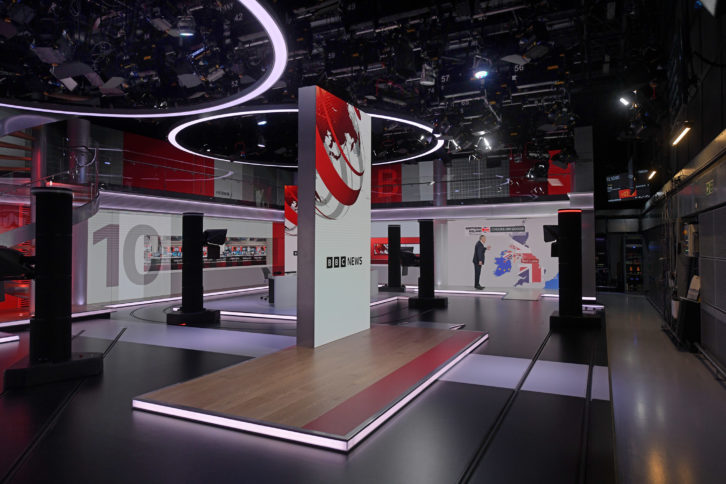
All of the screens are driven by Viz, which has meant a lot of development work both by the BBC and Vizrt. “The idea is to create what we call a multi-form, which means that the journalists have everything they could possibly want in the video template,” explains Cook. “There is one big multi-form template but that renders as a tower, it renders as a catwalk or it renders full screen, so you can then take those elements and put them anywhere you want within the studio.
“The way we feed those screens is from one source that feeds each screen, so the catwalk is split into three separate screens, X, Y and Z, and when you render it off, it’s a quad image that goes in there. Tiles two, three and four fill screens X, Y and Z. And then likewise when you do a tower, it renders as a split, so the left hand side of the portion goes as the top of the tower and the bottom of the tower is right hand side portion. This multi-form will kick out wherever you decide, so if you want it for the catwalk it will kick it out as a quad, if you want it as a tower it kicks it out as a split screen. The clever magic in the vision mixer desk and the automation system put it together.”
Automation
Automation is also important in Studio B’s new camera system, which has been built by Norwegian company electric.friends, after Cook initially saw their technology during a visit to Media City Bergen a few years ago. “They’d built this sort of set within the middle of the newsroom with these amazing cameras that sped around the floor, and you could put chairs over the tracks, you could walk over them” he says.
“With the Furios that are currently in Studio E, BBC health and safety requires very, very clear demarcation that you can’t walk over them. They are massive trip hazards. electric.friends is literally like a tram line, so you can walk over it, it’s very safe. They also are very clever with their cable management system, it’s single fibre that rolls up inside the tower. electric.friends is used on a number of Scandinavian television stations, and they’ve done a lot of development work with us because we wanted through-the-lens autocue hoods on the cameras. Our talent doesn’t like reading to a below lens autocue, which is what their solution was up to that point. So they did some development work to put the new Epic Autocue monitors on the cameras.”
Studio B now has more cameras on one track than the BBC has ever had before, with Cook describing the four situated around the presentation desk as “the Circle Line”. There are also two cameras on on the catwalk track, as well as one more, meaning a total of seven.
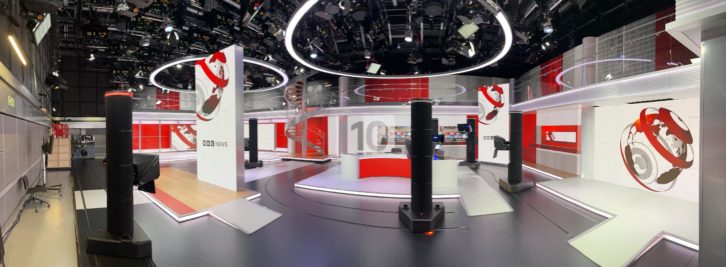
“Up until this point, electric.friends had never had their cameras controlled by Mosart, so our friends at Vizrt did a lot of development, electic.friends did a lot of development, and our very, very clever design director for automation Morag McIntosh has done a lot of development to control all of these cameras via automation,” adds Cook. “The cameras have got face recognition and auto-tracking, so they’ll follow a presenter if they move to keep them centre frame, they recognise the presenters and we store all the shots. They will recognise Huw Edwards, and they will go to his ‘P frame’, which is a shot that we’ve stored specifically for him.”
All of this new in-studio technology has also meant changes within the gallery. As well as the electric.friends robotic system, the vision mixer has also been upgraded. “That’s now running a Grass Valley Kahuna 9600 with four M/Es,” states Cook. “We’ve got a Raven nest system with three servers that provide the sort of looping backgrounds and bits and pieces for that. There’s been a lot of infrastructure changes under the bonnet and that’s to be expected when you bring in new technology.”
